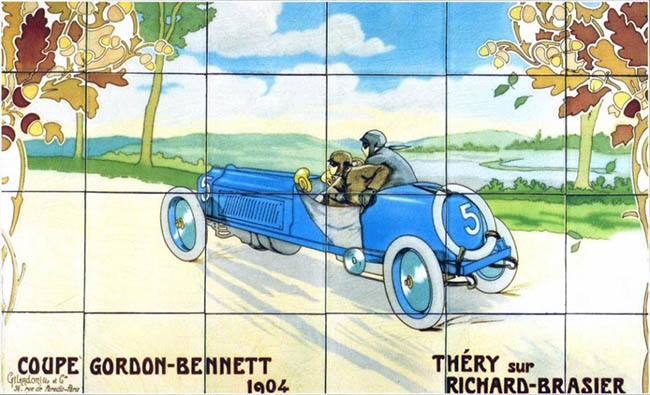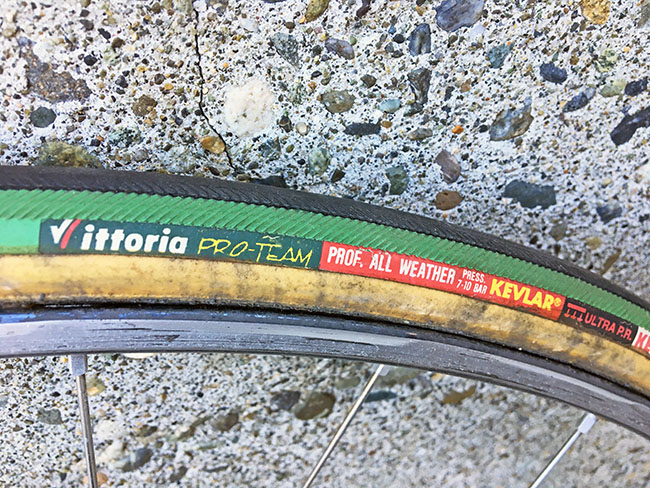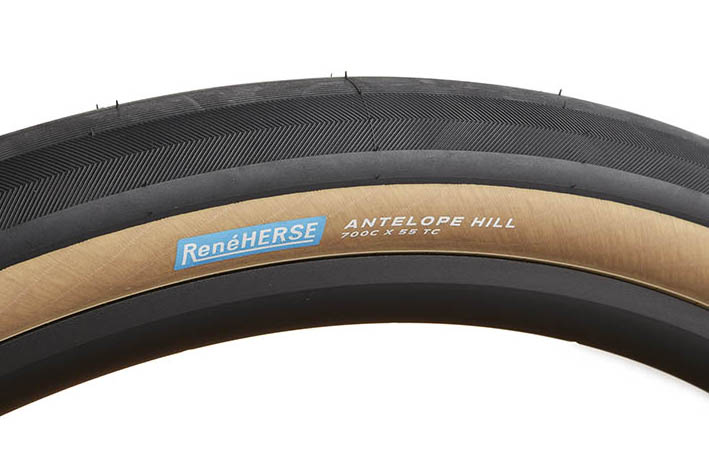Why Only Black Tread?

Autumn means colder temperatures and rainy weather, here in the Cascade Mountains and in many parts of the world. More than ever, the grip of our tires is on our minds. Why do all Rene Herse tires have black tread? Colorful treads can look nice, but black rubber offers the best grip.

That is one reason why all car tires today are black. In the early days of motoring, tires were made from natural rubber, which is white or gray. (That is why the famous Michelin man is white…) By the 1910s, it was becoming apparent that white rubber didn’t last well, and tire makers discovered that adding carbon black to the rubber made it last much longer. As a positive side effect, it increased the tire’s grip, too – and it made the tires black. Even today, you can get car tires in many colors, but they are considered a novelty and not intended for daily use, much less for performance driving.
It may come as a surprise that the color of rubber and plastic affects many other properties, too. For example, gray resins are stronger than black or colored varieties. That is why the frames of Berthoud saddles are gray. With rubber, blue appears to be the least durable – which is why the blue hoods for old Mafac brake levers are almost unfindable today. And red backpacks fade far more quickly than other colors…
The reason is simple: Colors are additives, and often, surprisingly large amounts of the colorants are needed to create the color. This often changes the physical properties of the raw material. The black color of tires works the opposite way: Carbon black is an additive chosen for its performance-enhancing properties, and it just happened to change the color to black.

Before we made our Rene Herse tires, we rode tires from many makers. When I was racing in the 1990s, Vittoria introduced their ‘Professional All Weather’ model with softer green rubber on the shoulders. This was supposed to be grippier when leaning the bike into wet corners. It seemed like the perfect tire for Seattle’s infamous rainy season.
We tried the ‘All Weathers,’ and immediately scared ourselves: They seemed to grip fine at first, while we were still riding on the black center tread. Leaning further, grip was lost very suddenly as we transitioned to the green rubber. Then TOUR magazine did one of their famous tire tests. They measured tire grip on wet roads and confirmed that the ‘All Weather’ was less grippy than Vittoria’s standard, all-black tires! We never found out what the Italians were thinking when they developed these tires. I recall a big marketing push with all kinds of colors around that time, but it didn’t last long. Today, all Vittoria tires have black tread again.

Later, we imported the first supple, wide 650B tires from Japan. Made to resemble classic French rubber, the first model was available only in red and white. We loved the supple casings, but we found that in the wet, the white version was noticeably lacking in traction. Riding the red model, we also felt the grip bleed away earlier than we expected. We requested a special run of tires with black tread, and those gripped much better.
Of course, black tread alone isn’t a guarantee for excellent traction. I recall one tire from a small company that would spin when accelerating from a stop on cold, wet (but clean) pavement. Clearly, not all rubber is made equal.

When we first talked to the engineers at the tire factory in Japan about the tires we wanted to make, they showed us many beautiful colors. There was a very attractive tea green… When we asked about the performance, the engineers left no doubt: “Black has the best grip.” What about the colored treads? “It’s all about fashion. It allows small companies to offer tires that are different from the mainstream.”

There is nothing wrong with fashion, but for us, performance is more important. On the steep, twisty descents of the Cascade Mountains, we need tires that grip. And we’re using a top-level tread rubber is among the grippiest you’ll find anywhere.

Of course, there is much more to making a tire grip than just the tread compound. Our herringbone tread pattern has many ribs that interlock with the road surface. When we tested the herringbone tread back-to-back with slick tires, the difference was very noticeable. A supple casing also grips better because it keeps its tread in contact with the road surface. A stiffer tire will bounce more and have less traction. For our Rene Herse tires, we’ve optimized all these parameters to offer you tires with more grip than just about any other tire – on dry and wet roads.

Even with the best tires, riding in Autumn and Winter requires extra caution. There are many factors that decrease traction when it’s wet and/or cold:
- Cold rubber is less grippy – your traction is reduced when the temperature drops. This is quite significant, especially once the temperature drops below 10°C (50°F).
- On wet roads, tread patterns that interlock with the road surface offer the greatest benefits. With the right tires, you can lean quite far into corners (top photo) – if the asphalt is clean.
- After the first rain, the water mixes with dust, oil and other airborne pollution to form a very slippery surface layer. Use extreme caution when it hasn’t rained in a long time.
- Your tires stay wet for a while after you ride through water. Remember this when you cross a wet patch on the road: Your tires may still be wet in the next corner, even if the road surface there is dry.
- Painted traffic markings on the asphalt can be very slippery in the wet. Metal surfaces – grates, manhole covers, railroad tracks, plates covering trenches at construction sites – are even worse. Avoid them if you can. If you must ride over them, straighten your bike before you reach them, so you aren’t leaning while you are on the slippery surface.
- Scan the road for shiny oil that has dripped from cars with leaky crankcases.
- Tire sealants that use latex – which means most brands – won’t seal when it’s cold. (Latex doesn’t cure well when it’s colder than 10°C/50°F.)
- Snow and ice require special considerations.
We enjoy riding our bikes year-round, so we’ve developed components that perform well in wet and cold conditions, not just when it’s dry and warm. With the right equipment and skills, riding in all weather can be safe and enjoyable.
Further reading:
P.S.: I apologize for re-using the opening photo. There aren’t many that show us cornering hard in the rain – when it’s wet and cold, we prefer keep going to stay warm, rather than stop for photos!


